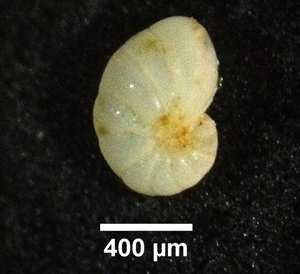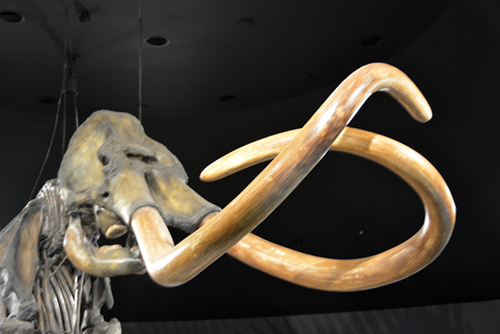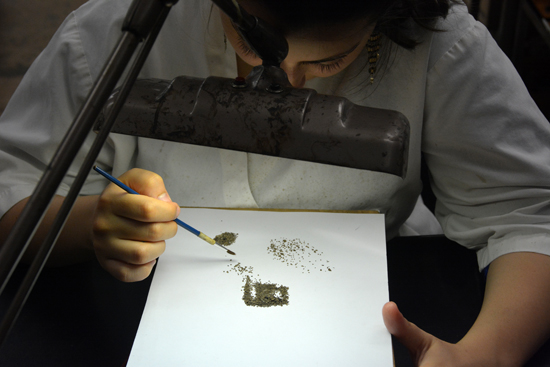
|
| |||||||||||||||||||||||||||||||||||||||||||||||||||||||||||||||||||||||||||||||||||||||||||||||||||||||||||||||||||||||||||||||||||||||||||||||||||||||||||||||||||||||||||||||||||||||||
| paleontology | Last Updated • March 1, 2016 | ||||||||||||||||||||||||||||||||||||||||||||||||||||||||||||||||||||||||||||||||||||||||||||||||||||||||||||||||||||||||||||||||||||||||||||||||||||||||||||||||||||||||||||||||||||||||
Paleontology is the study of ancient life in the broadest sense. Scientific information for the study of ancient life comes from fossils. A fossil is any remain of ancient organisms, or any evidence of their activity (a trace fossil).
(What does "fossil" mean? The word fossil comes from the Latin fodere, to dig: fossilis means "something that can be dug"; in the past it used to be referred to anything extracted from underground, including minerals and human artifacts, but today its meaning is restricted - as stated above - only to remains of ancient life).
The fossil record is far from being complete or perfect: most of the time fossils are missing, not preserved, and we speak of the incompleteness of the fossil record. That is, we can never have all of the fossils from all of the individuals from all of the species that ever existed.
| macrofossils and microfossils | Last Updated • March 1, 2016 |
Large fossils that are visible without the aid of microscopes or magnification are called Macrofossils. In the past, paleontological expeditions were aimed at the collection, observation and description of big, visible and easily identifiable fossils. Many of these fossils are now preserved in museums, and most fossils in museums are actually macrofossils.
Macrofossils in general represent organisms that lived in a variety of different environments, marine or terrestrial.  Benthic organisms (or benthos) are those that live at the ocean bottom, while pelagic organisms are those that either swim (nekton) or float (plankton) in ocean waters. (from the United States Geological Survey, via SEPM, Society for Sedimentary Geology)

Two examples of macrofossils: Both pictures: © Alessandro Grippo
With the development of more advanced observational tools, microscopes in particular, it became possible to study Microfossils, fossils of organisms that would not be visible to the naked eye. Microfossils are more common, more widespread, more likely to remain intact over time and more likely to provide a huge amount of information. Think for instance of what could happen when drilling or even simply excavating: you can easily break a big, macroscopic bone, but a microfossil would remain intact even in fragments the size of sand. Micropaleontology has become in time a discipline of its own. It can help solve a variety of basic geological and biological problems, and is a precious tool for correlation and dating in the oil industry. 
above, Florilus chesapeakensis, Miocene, from Randle Cliff Beach
above: from the blog Fossils and Other Living Things | preservation of fossils | Last Updated • March 1, 2016 |
As a general rule, the hard, mineralized parts (bones, shells, teeth, etc.) of an organism tend to be preserved more easily than its soft tissues, which are subject to rapid microbial decay in presence of O2. Skeletal materials often contain also an organic matrix which undergoes rapid decay after death. This may hinder durability and preservation of the hard parts too. It is also possible that, under unusual circumstances such as, for instance, lack of O2 (anoxic conditions) in the environment of deposition, the soft parts of an organism can be preserved.
Some kinds of biological activities can actually work the other way around, increasing the chance of preservation:
Loss of skeletal material can also occur because of the action of physical elements (weathering processes)
There are several materials that are produced by an organism during its life, and could potentially be preserved in the fossil record.
and the most important Inorganic and Organic Components they produce
Adapted by Alessandro Grippo from: Towe, K.M., (1987) Fossil Preservation. In: R.S. Boardman, A.H. Cheetham, and A.J. Rowell (eds.), Fossil Invertebrates. Palo Alto, California, Blackwell Scientific Publications, pp. 36-41. Soft tissues are lost very quickly after death in presence of oxygen. Often, when we discuss the preservation of organic compounds one of the first molecules that comes to mind, given also its presence in contemporary pop culture, is that of DNA. In reality, the DNA molecule is not very stable, and decays very quickly right after death of an organism. When the DNA molecule is found in a fossil, it always belongs to a very young (less than 1 my old) organism, and special preservation conditions, such as either desiccation or freezing, have occured. As a consequence, despite of what we hear in certain movies, the chance of finding dinosaur DNA are close to none. - Vittorio Vialli, Notes from the Paleontology Lessons, Pitagora, Bologna - Michael Foote and Arnold I. Miller, Principles of Paleontology, Freeman, New York - SEPM Strata, Society for Sedimentary Geology, Tulsa, Oklahoma
| |||||||||||||||||||||||||||||||||||||||||||||||||||||||||||||||||||||||||||||||||||||||||||||||||||||||||||||||||||||||||||||||||||||||||||||||||||||||||||||||||||||||||||||||||||



